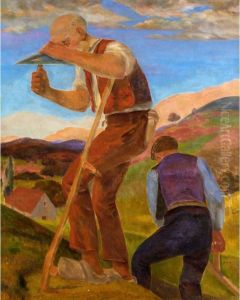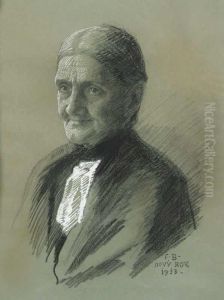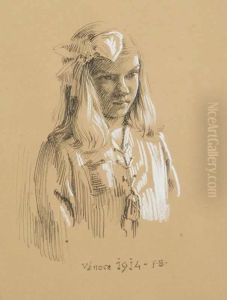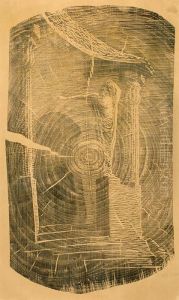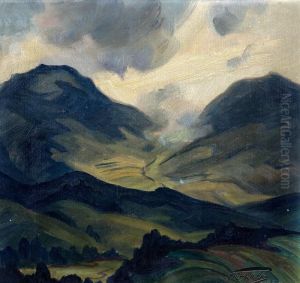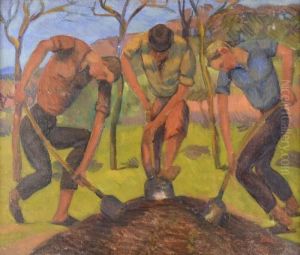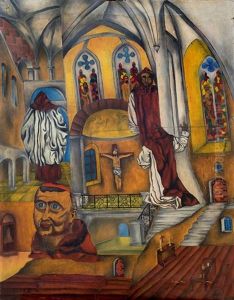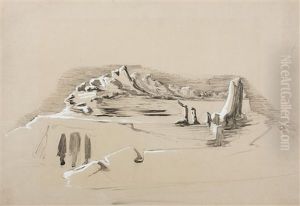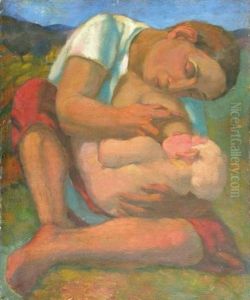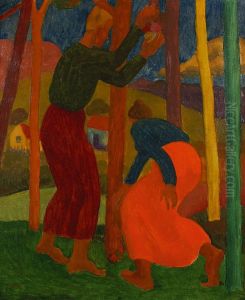Frantisek Bilek Paintings
Frantisek Bilek was a Czech sculptor, architect, and graphic artist, known for his unique expressionist style that combined symbolism and art nouveau influences. He was born on October 6, 1872, in Chýnov, a small town in what was then the Austro-Hungarian Empire and is now the Czech Republic. Bilek's artistic talents became evident early on, and he pursued his education at the Academy of Fine Arts in Prague, where he studied under the guidance of renowned Czech sculptor Josef Václav Myslbek.
Throughout his career, Bilek's work was deeply influenced by his religious faith, philosophical contemplation, and a fascination with the natural world, particularly the life of farmers, which was rooted in his rural upbringing. His sculptures often feature elongated, distorted forms and a sense of dramatic tension, reflecting his interest in capturing the spiritual struggle and inner torment of his subjects. One of his most famous works is the wooden sculpture 'The Harvester', which showcases his distinctive style characterized by a synthesis of symbolism and rustic simplicity, evoking the connection between human labor and divine creation.
In addition to his sculptural works, Bilek made significant contributions to graphic art and architecture. He designed his own house-studio in Prague, which is now the Frantisek Bilek Memorial. The building itself is a testament to his architectural vision, combining functional aspects with symbolic and sculptural elements, and is considered one of his major works. His graphic art, particularly his woodcuts, was another avenue through which he explored religious and existential themes, often using stark, powerful imagery to evoke emotional responses from the viewer.
Bilek's influence extended to his role as an educator, as he taught at the School of Applied Arts in Prague. His work and artistic philosophy left a lasting impact on Czech art, continuing to inspire and challenge future generations of artists. Frantisek Bilek passed away on October 13, 1941, in Prague. Despite the fact that his work was not widely recognized internationally during his lifetime, he is today celebrated as one of the Czech Republic's most original and profound artists of the early 20th century.
